An extraordinary concentration, stratification, interpenetration of sacred buildings. Thirteen sacred buildings, seven of which can be identified as basilicas.
Among the most ancient evidence of Christian faith, gathered in a site that originally housed a temple dedicated to Hercules which was later replaced by the necropolis of the roman Nola. And to that, was linked the definition of Coemeterium with which the area was known at the end of the 3rd century, when its slow transformation into a paleochristian cult area began, around the which the town of Cimitile developed in the following centuries, a derived name right from Cimiterium. A village not far from the oldest and largest capital of the fertile Ager Nolanus, Nola, to which the two Saints who made the history of the early Christian sacred area are forever linked.
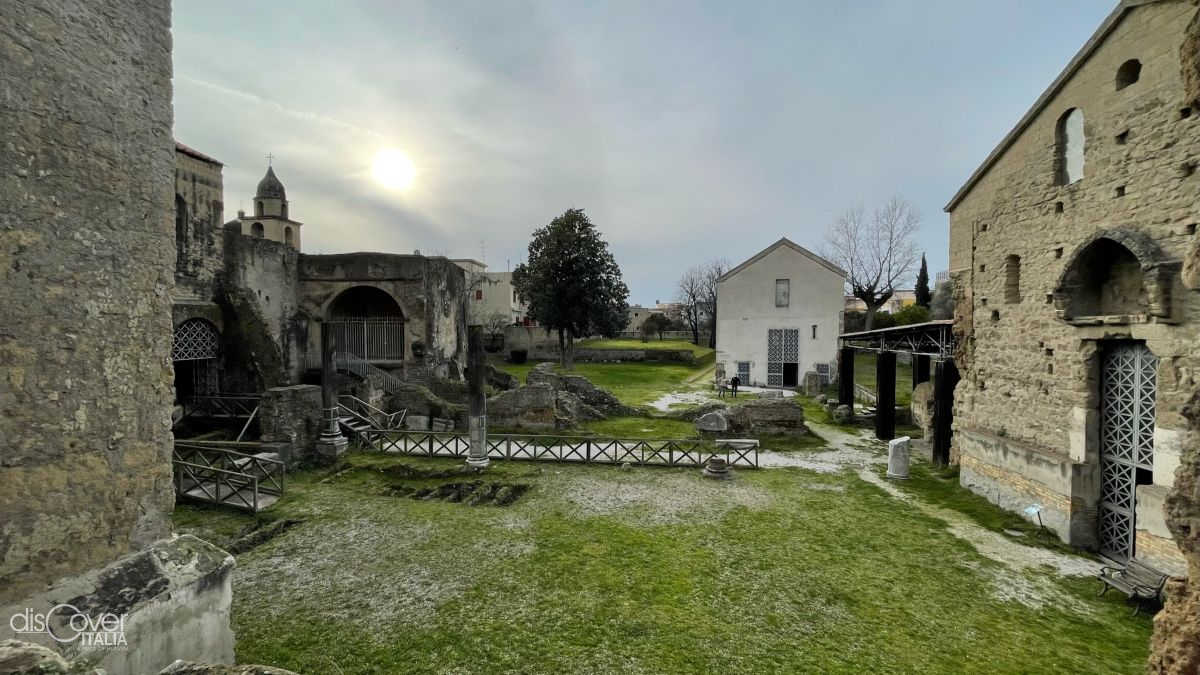
Son of a rich Syrian who moved to Italy, Felice was born in Nola in the second half of the 3rd century and married to the Christian faith, becoming a priest. Partner of the then bishop of Nola, Maximus, he was captured and tortured at the time of Emperor Decius, during the persecutions against Christians. Tradition attributes his salvation to an angel that allowed him to escape from the executioners and reach Bishop Maximus, who had managed to take refuge in a secret place. Felice tried to save him, reviving him with grapes, before bringing him back to Nola on his shoulder.
The new wave of anti-Christian persecutions under the Emperor Valerian forced Felice to hide for six months in the cemetery in an empty cistern protected, according to legend, by large webs woven by spiders. The edict of Constantine of 313 which put an end to the persecutions allowed him to return to Nola as a free man. On Maximus' death, he refused the nomination as bishop in favor of another priest and preferred to devote himself to a life of extreme poverty, marked by deep suffering, led to take care of the Cimiterium as the deceased prelate already did. For this reason great was the consideration and affection that his coreligionists had for him, considering him a martyr, even if he didn’t lost his life under torture. And at his death, was buried in the ancient necropolis of the Cimiterium by the faithful of Nola, under a poor altar, in line with his choice of life, marking him as a saint already along with the miracles attributed to him, including the peculiarity of manifesting itself with a characteristic scent.
The first Basilica of St. Felice
The tomb of the saint soon became a destination for faithful from all over the world. Ara veritatis, they called it, because it was believed that it was effective to visit against false testimony. The continuous flux of people suggested adding an ark to the simple initial tomb, consisting of a small cell with a shrine supported by columns. That structure was the core of the first Basilica to which others would later be added, to form the incomparable Cimitile complex.
In 313 that first structure was demolished to make way for another building with the entrance to the south, which was identified as a aula ad corpus. Just a few decades later, around the half of the century, a three nave basilica was built with the apse to the east. This eastern basilica would later be recognized as basilica vetus.
The work of St. Paolino and the Basilica nova
It was in the 5th century that Meropio Ponzio Anicio Paolino, a native of Gaul, of such an aristocratic lineage to became senator when he was just twenty, former governor of Campania, where, settling in Nola in 379, he met the figure of St. Felice and the cult in his honor. Having converted to Christianity and embraced the monastic life with his wife Teresia, he returned to Nola as a priest and in 395 he settled with other monks right near the venerated tomb of St. Felice. After initially carrying out the restoration of the pre-existing sanctuary structures, between 401 and 403 he started the construction of a new church, to give a better welcome to the faithful who flocked more and more numerous, in addition to providing for the creation of spaces intended for monastic life.
For the construction of the new church, the apse of the hall built to the north was demolished by a triforium, still clearly visible, a triple opening connecting with the building under construction, which took the name of Basilica nova, to distinguish it from the vetus. The passages of the triforium, closed by large gates, led into a large atrium, decorated with fountains and a marble cantharus with canopy, also leading to the new church through another triforium with crosses. This was built with three naves, separated by two rows of six columns, obtained like Corinthian capitals from Roman materials. The central nave was covered with a ceiling painted with scenes from the Old Testament. The room was lit by a chandelier placed on the columns and by lamps fixed with chains to the central ceiling. The floor was covered with white marble slabs. The smaller side nave led to four cubicula dedicated to prayer and burial of the monks and their families. The presbytery was raised above the nave and presented a trichora apse of very precious marble as well as the floor and wall decorations. The relics of various saints and some fragments of the Cross were placed on the altar.
An intervention also concerned the tomb of St. Felice, which was enlarged and surrounded by a square plan shrine decorated in mosaic. When in 431 Paolino, Bishop of Nola, died, he was buried next to St. Felice, in the place he dedicated his care for many years. And between the end of the fifth and the first decades of the 6th century both tombs were embellished with mosaic shrine on a golden and blue background. The large western apse was then built as opposed to the original eastern one of the Basilica of Saint Felice.
From the Basilica Nova to the Basilica of St. Giovanni
The eruption of the Vesuvius that overturned the territory of Nola between 507 and 511 covered the Basilica nova with pyroclastic materials, which was later completely swallowed by the mud of a alluvion accompanied by the flooding of the Clanio river. After that destruction, only a few parts of the building were recovered, including the atrium and the central and left aisles, used as burial areas, while the rest was left underground. It was only after a long time, when the memory of the basilica of St. Paolino was already been lost, that the trichora and a part of the central nave that remained were transformed into the Basilica of St. Giovanni, further resized in the 14th century. The façade and the triumphal arch in Gothic style date back to that period, as well as the frescoes on the walls and in the presbytery. St. Giovanni the Baptist, to whom the basilica was named after, appeared in a painting in the pointed lunette on the entrance portal.
It was in the 20th century that in various excavation and archaeological research campaigns the lost remains of the Basilica nova were gradually brought to light. Only in recent years, however, it was possible to reconstruct the various transformations undergone by the work of St. Paolino and its valuable original decorations, both painted and marbled, completely lost.;
The Basilica of St. Felice parish of Nola
All the interventions that followed one another over the centuries in the vast sacred area now incorporated in the center of Cimitile had as their fulcrum the mausoleum of St. Felice which, besides its religious value and the devotion to which it has been continuously subject to the present day, its frescoes and mosaics, it can be considered one of the most important paleochristian artistic creations in Europe.
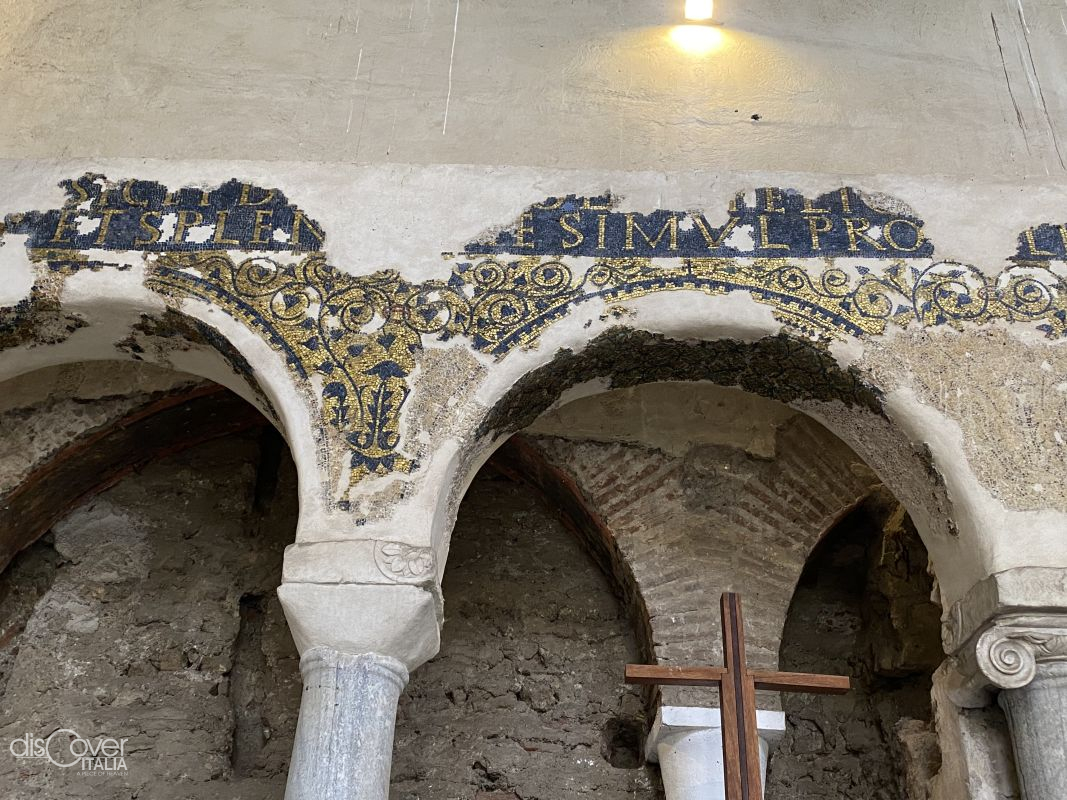 The valuable mosaic aedicule is composed of an enclosure with finely perforated marble pillars and barriers surrounding the saint's tomb. The brick tomb in which his remains are kept appears to be covered by a marble slab with the relief image of the Good Shepherd. Behind the columns of the aedicule the tombs of Saints Paolino Juniore on the right and Felice on the left can be admired. On the right arch there is a fresco depicting Jerusalem, commissioned by Paolino at the beginning of the 5th century. Behind the tomb of St. Felice stands an arch, partially walled, supported by two columns in Aquitaine marble with precious capitals with the effigies, on the left, of Felice and, on the right, of Faustillo. Two arches, without mosaics, connect the aedicule to the left wall north of the basilica where the Sancta sanctorum chapel was created in the early Middle Ages
The valuable mosaic aedicule is composed of an enclosure with finely perforated marble pillars and barriers surrounding the saint's tomb. The brick tomb in which his remains are kept appears to be covered by a marble slab with the relief image of the Good Shepherd. Behind the columns of the aedicule the tombs of Saints Paolino Juniore on the right and Felice on the left can be admired. On the right arch there is a fresco depicting Jerusalem, commissioned by Paolino at the beginning of the 5th century. Behind the tomb of St. Felice stands an arch, partially walled, supported by two columns in Aquitaine marble with precious capitals with the effigies, on the left, of Felice and, on the right, of Faustillo. Two arches, without mosaics, connect the aedicule to the left wall north of the basilica where the Sancta sanctorum chapel was created in the early Middle Ages
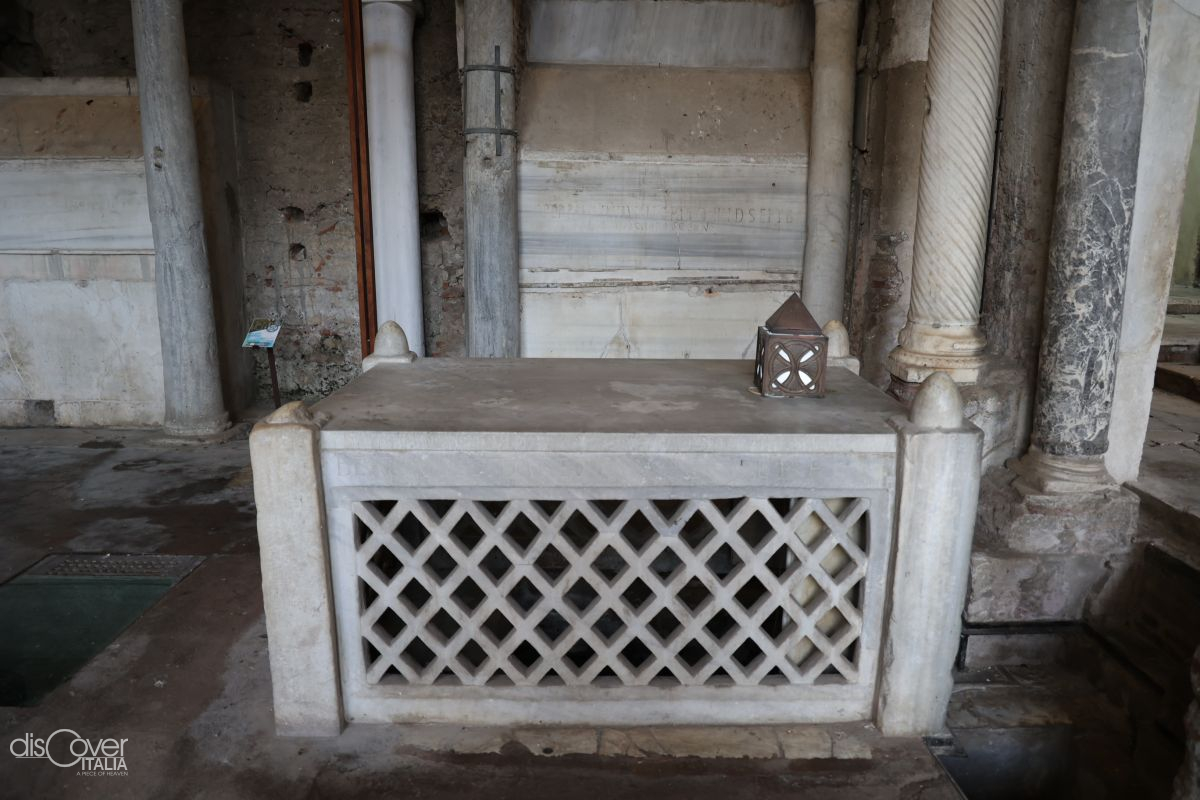
Today, the sacred building presents at its entrance, facing south, an archivolted pronaos supported by gray granite columns without capitals. Several funeral slabs can be seen on the floor, frescoes depicting St. Giorgio remain on the walls and, on the other side, St. Giovanni and St. Nicola. An arcosolium is frescoed with the image of Jesus giving blessings on the throne with the Virgin and St. Giovanni. Under the arcosolium there is a finely sculpted 3rd century Roman sarcophagus. Another fresco dating back to the 11th century and depicting the Communion under both kinds (bread and wine), with the particularity of offering three images of Christ, is located on the right of the western apse built in the 6th century. Other frescoes, probably dating between 10th and 15th centuries, adorn the wall that divides the presbytery from the mosaic aedicule of the tomb of St, Felice. Of the stratifications of interventions carried out over time, the two opposing apses to the east and west remain.
Since they year 2000, the presbytery of the basilica has housed an interesting Antiquarium in which a sculpted Roman sarcophagus, various marble slabs with Roman epigraphs, terracotta vases and oil lamps are displayed.
Between the western apse and the entrance to the basilica stands the square bell tower, built after the 10th century.
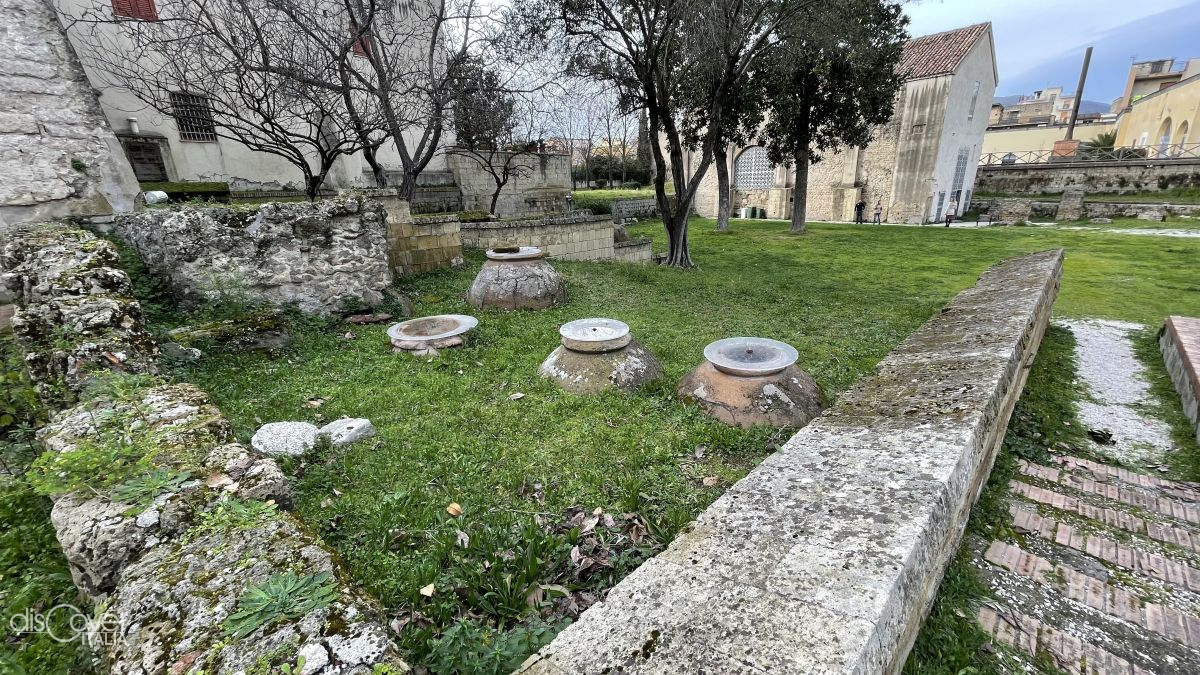
Among the oldest buildings in the sacred area of Cimitile, there is the Chapel of St. Caulonio, probably prior to the 5th century and therefore the reorganization of St. Paolino. Accessible through a tunnel of the church of St. Felice. It was restored between the end of the 9th and the beginning of the 10th century by the bishop of Nola Leone III, perhaps precisely to house the relics of the saint, who in Cimitile was venerated as St. Calionio or Calione.
The Chapel of Saint Mary of the Angels
Together with the Chapel of St. Caulonio, the chapel of S. Mary of the Angels is integral part of the group of buildings developing around the Basilica of St. Felice, corresponding to its apse. It also was the burial place of the members of the Confraternity of the Immaculate Conception, and in the 19th century it was also known as the Chapel of the Dead. On the left wall, the fresco depicting the Virgin and Child between two angels from the 14th century is of considerable value.
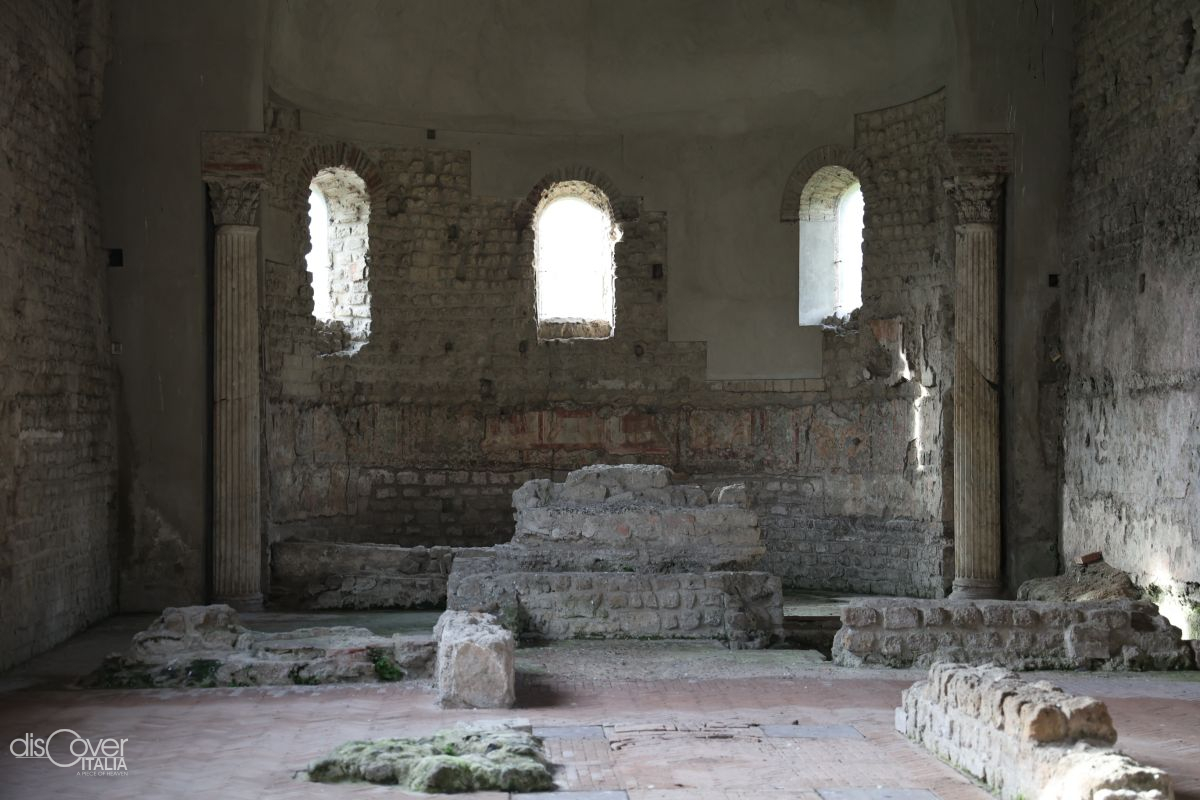
It is one of the oldest evidence of Romanesque art, an ideal link between the paleochristian buildings and the Romanesque cathedrals. Built before the flood of the 6th century, the Basilica of S. Stefano is arranged facing the west, where the apse is located, to the east, where the entrance is, and is also facing the center of the Cimitile complex, which corresponds to the tomb of St. Felice. Another peculiarity is that it is one of the oldest Christian churches with a single nave. The triumphal arch is supported by two fluted columns with bare Corinthian capitals from the 2nd century AD. In the lower part of the apse there are two overlapping frescoes: the most recent layer presents in the lower register the figures of Saints framed by red frames, which date back to the 12th-13th century.
The Basilica of St. Tommaso
Built between the 6th and 7th centuries on the soil deposited by the flood. Has kept numerous sepulchers with the relative, and significant, funerary kits for centuries. Inside the church in fact, shielded by metal gratings placed near the entrance and in front of the apse, some of the 84 burials found under the floor are visible together with fibulae, earrings and other bronze jewels and terracotta jugs, materials dating back to the first centuries after construction. To the left of the facade rises the bell tower with the unique bulb cover, while to the right there is a partially buried pool for the production of wine and dolia.
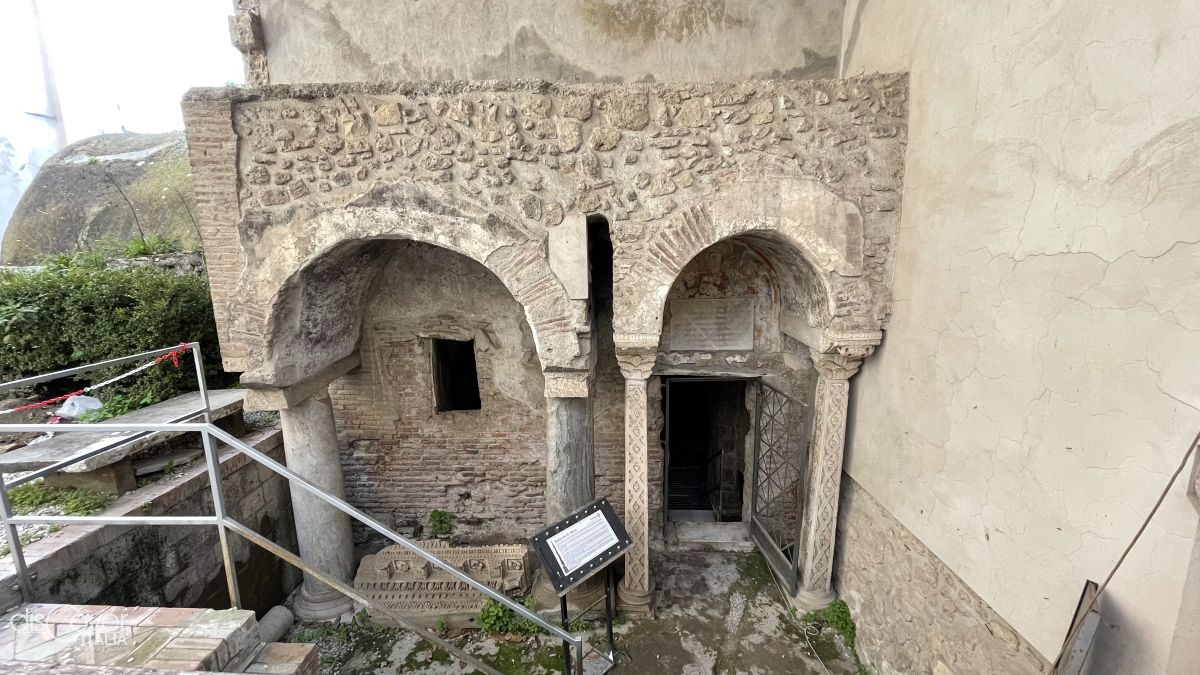
Built on the initiative of Bishop Leo III between the end of the 9th and the beginning of the 10th century, the Chapel of the Holy Martyrs is the result of the transformation of a mausoleum of the pagan necropolis of the 3rd century. The church consists of three communicating rooms. The porch is supported by two columns decorated on every side and testifies to the moment of transformation into a basilica in the 9th century. Of particular value are the frescoes of the second half of the 3rd century, of excellent workmanship, decorates the walls in the arcosolium: on the right of the entrance are paintings of Adam and Eve, while on the left Jonah who is thrown into the sea. On the southern side of the chapel, there are the apse and two block altars, surmounted by niches frescoed in the 13th century where St. Eusebius is depicted on the left and La Maddalena, presented as a queen, on the right. On the right wall of the entrance, and also on the left, are painted five scenes of the Passion of Christ, dating back to the 9th-11th century.
Beyond the arch that divides the basilica, stands the chapel of St. Giacomo whose miracles are frescoed on the vault in front of the entrance. There is also a marble considered miraculous, protected by a grate, and a reliquary containing the blood of the martyrs to whom the chapel is named after. It is said that, on the day of Christ's death, that blood would gurgle in a clearly discernible way. According to tradition, the white marble slab would have been colored and modified forever by a drop of blood fallen from the crown that a pilgrim had previously lowered right into the reliquary.
Useful information
Opening hours:
Monday: CLOSED
Tuesday: from 8.30am to 1pm.
Wednesday: from 8.30am to 1pm.
Thursday: CLOSED
Friday: from 8.30 am to 1.00 pm - from 2.30 pm to 6.00 pm.
Saturday: from 8.30 am to 1.00 pm - from 2.30 pm to 6.00 pm.
Sunday: from 8.30am to 1pm.
ENTRANCE TICKET
full: €4.00;
groups of more than 10 people: €2.00
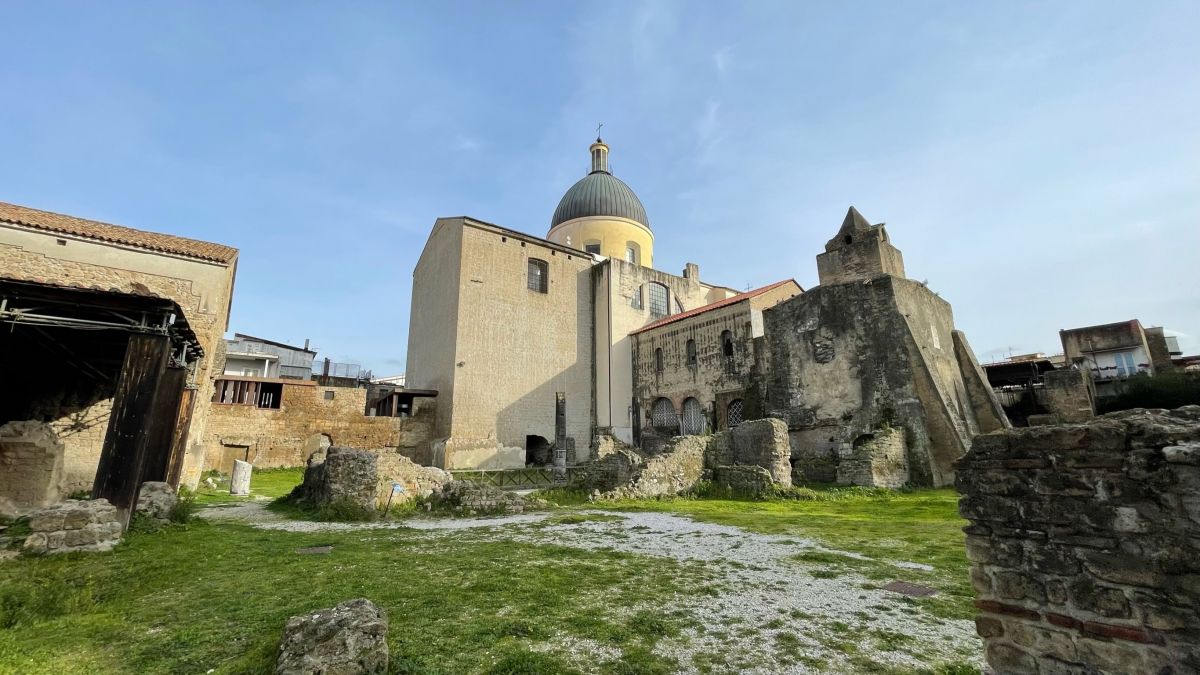
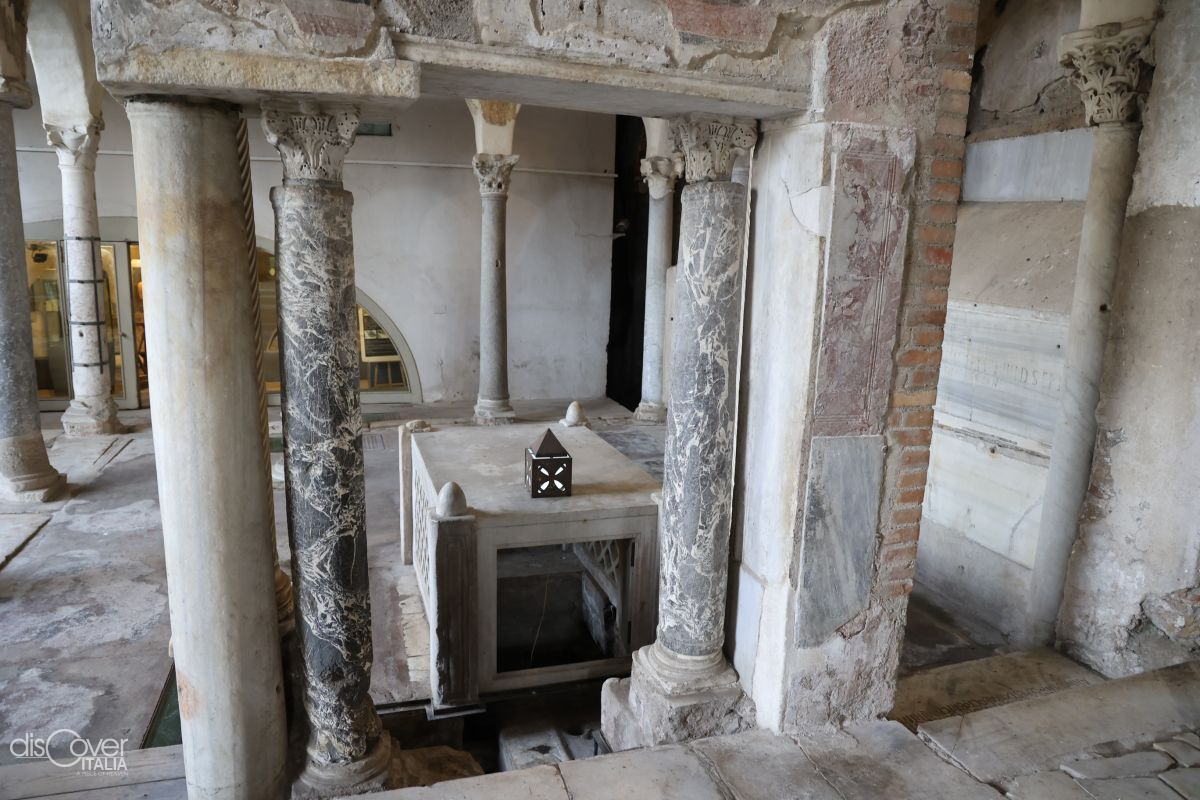
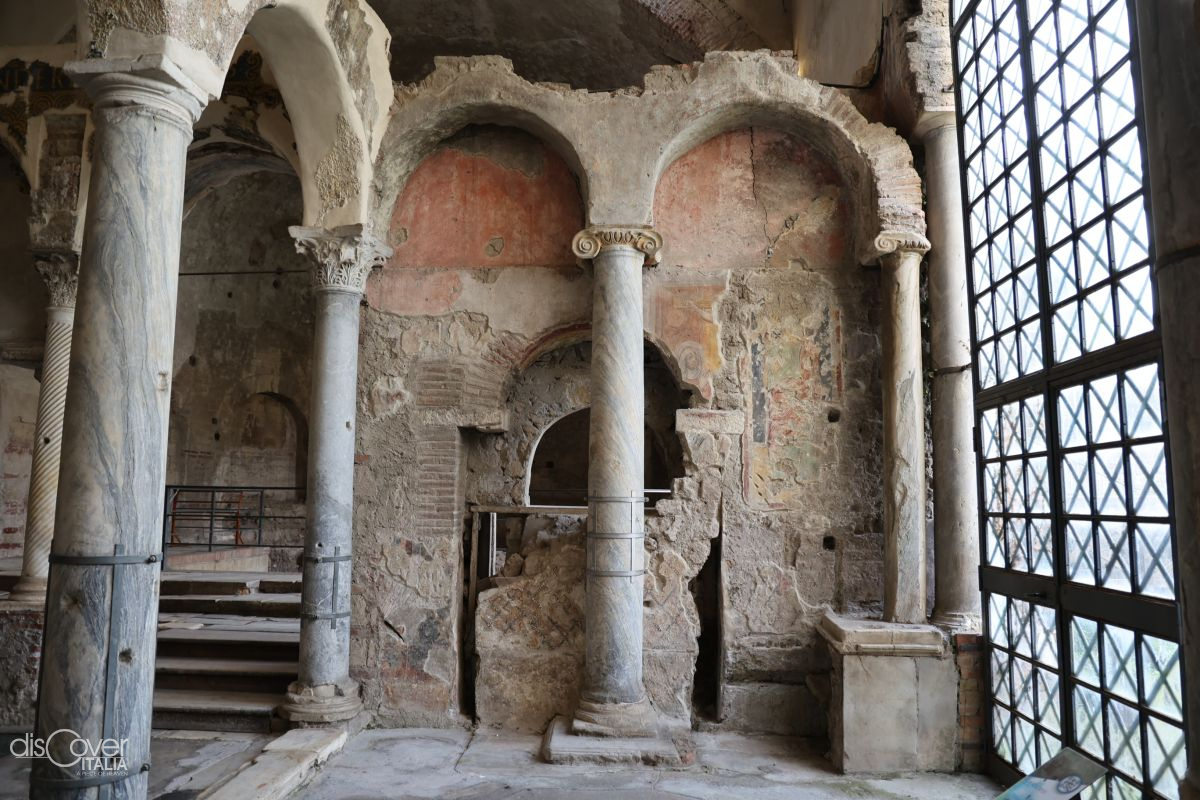
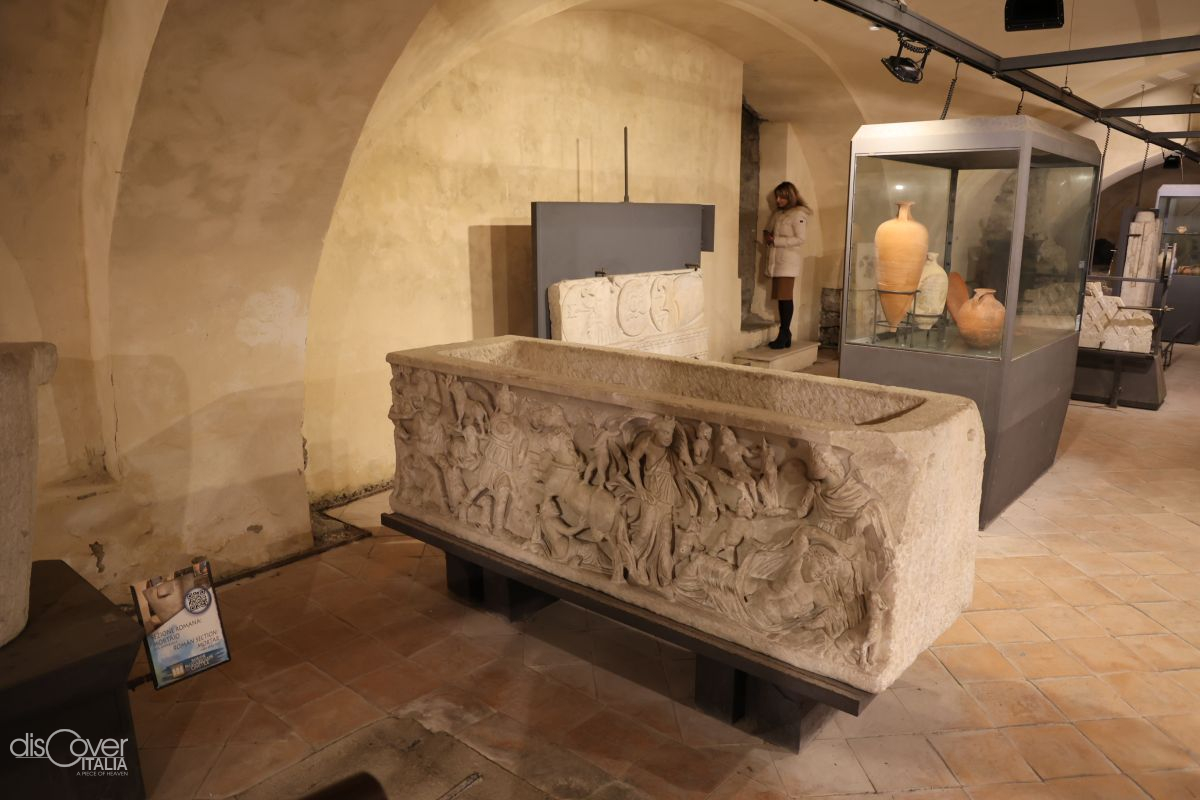
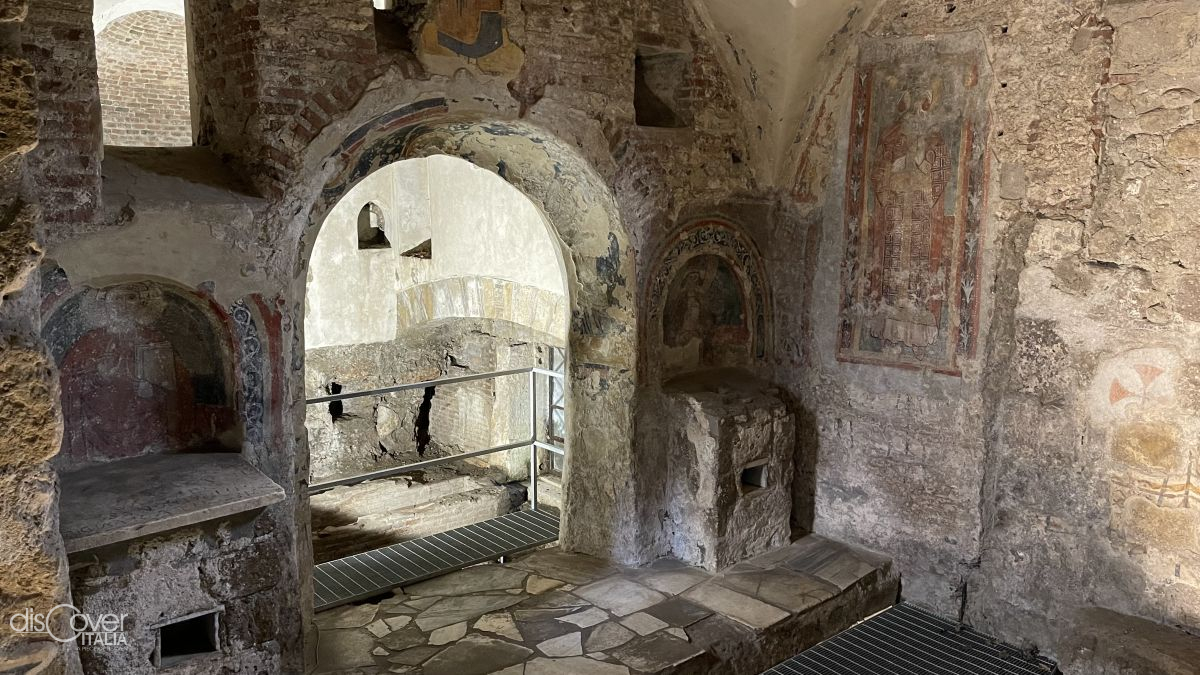
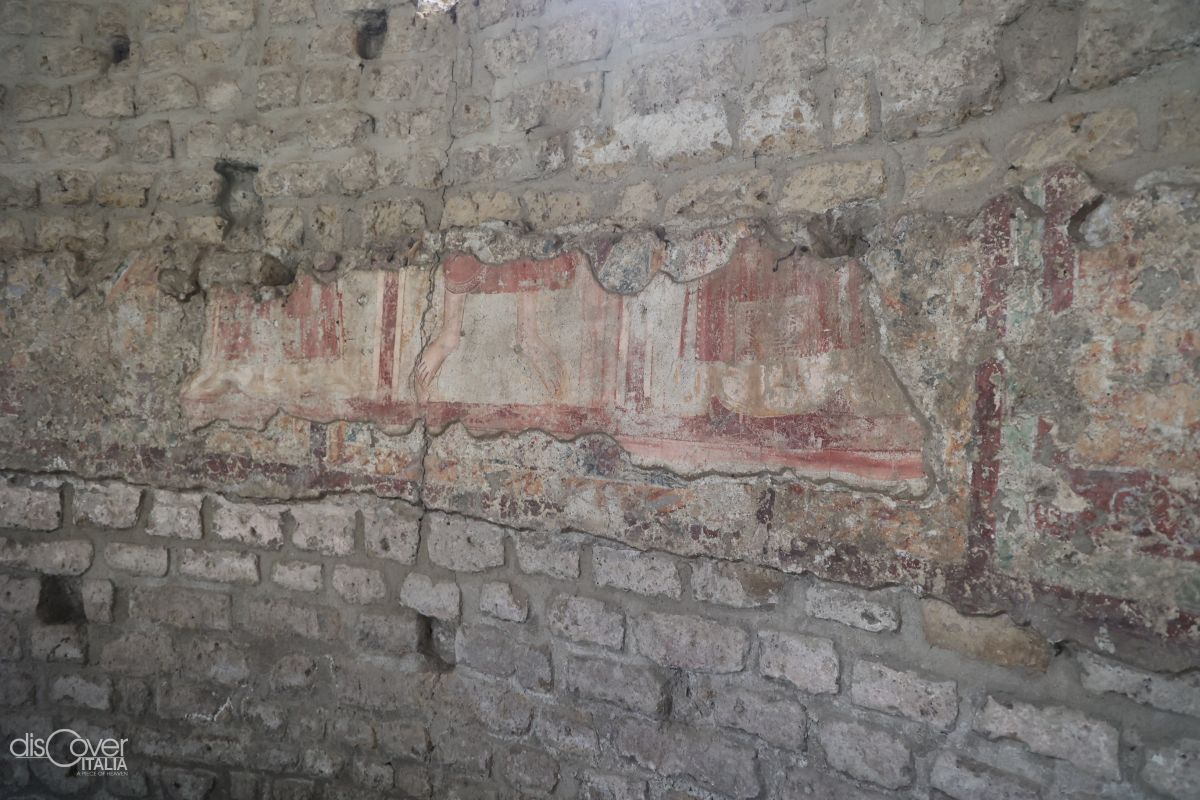
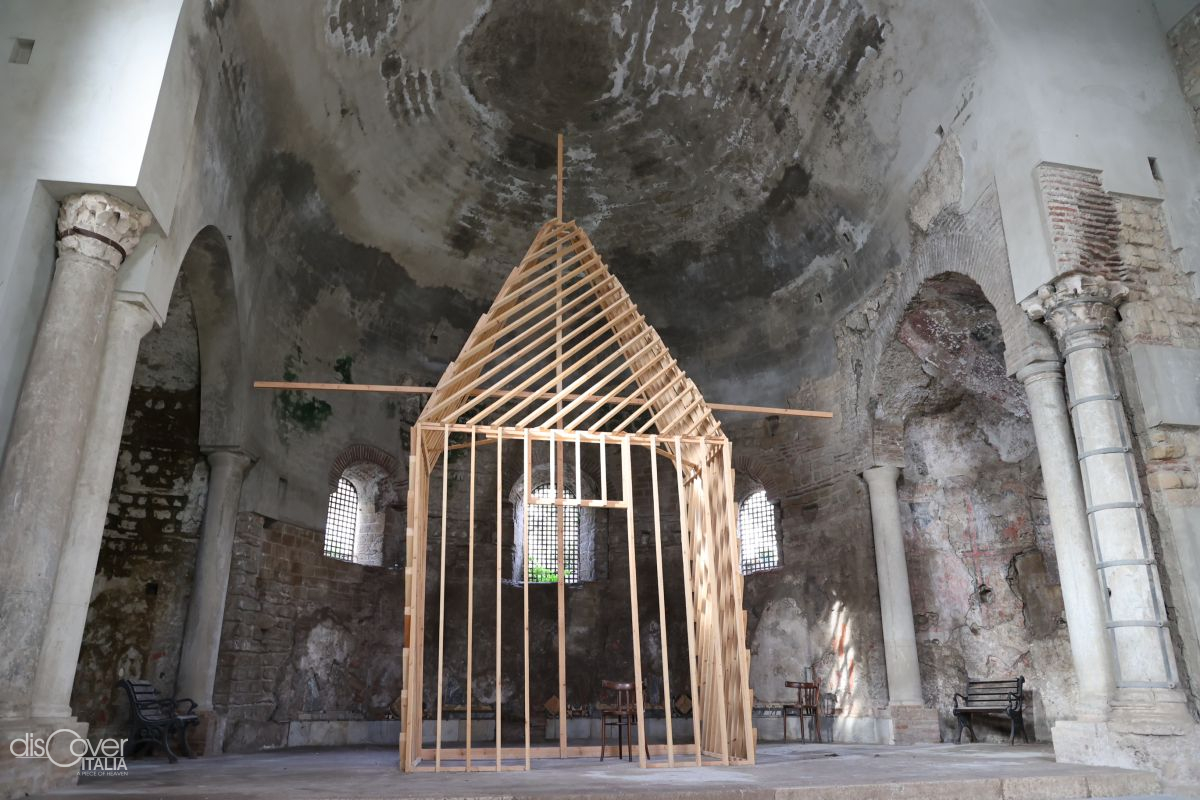
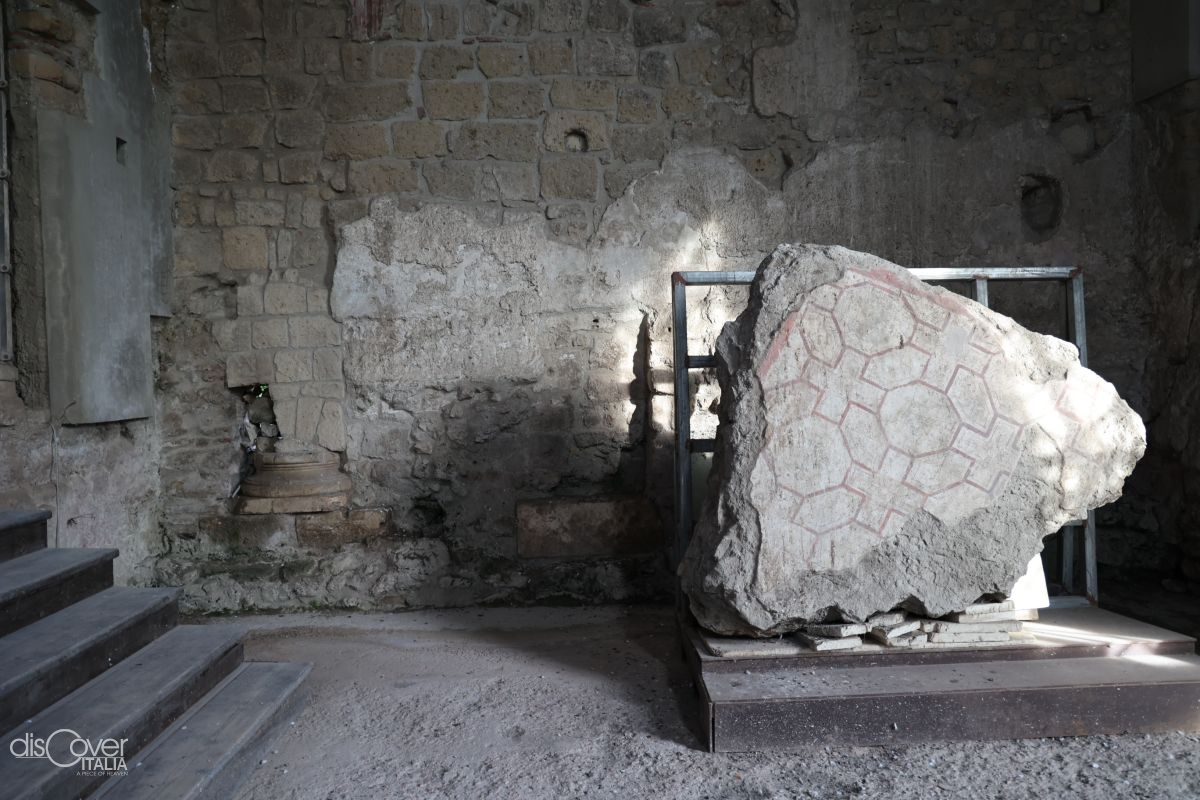
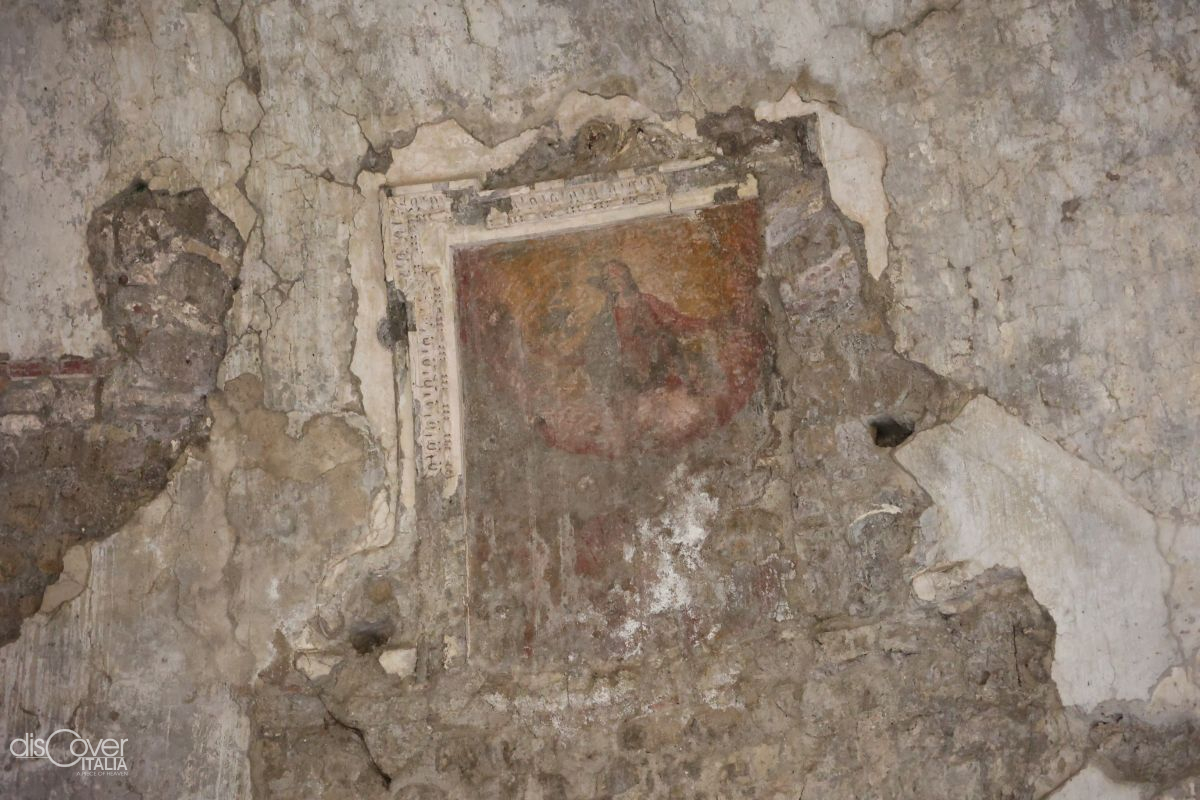
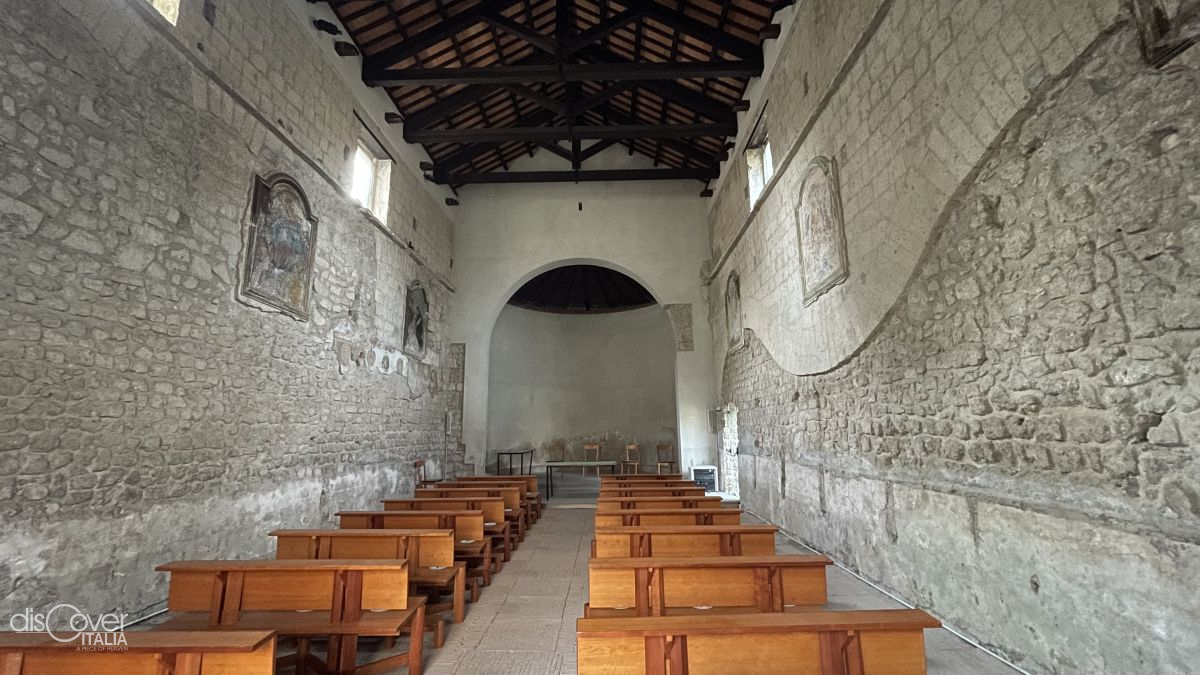
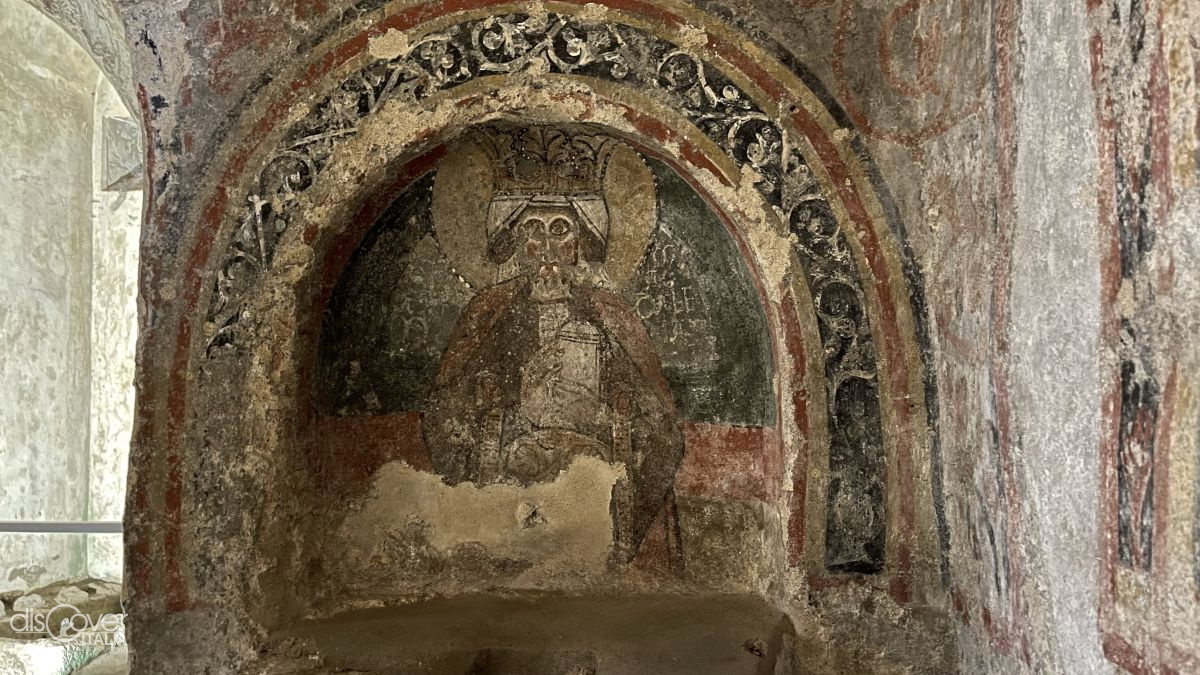


Comments powered by CComment